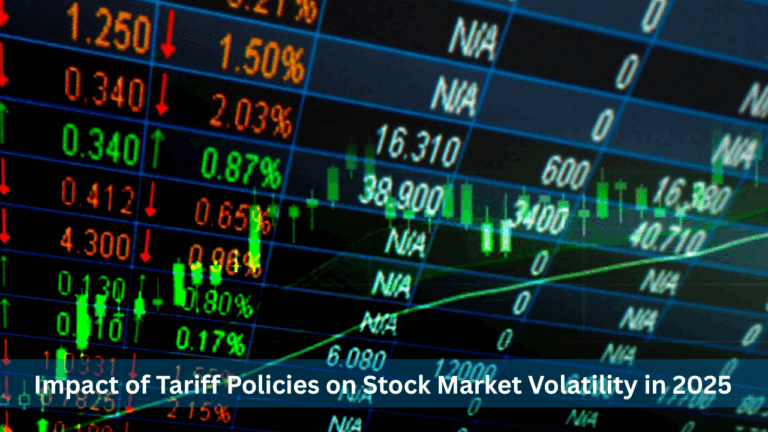U.S. Stock Markets Drop Sharply as Treasury Yields Rise: What It Means for Indian Investors
The U.S. stock markets witnessed a significant downturn on May 21, 2025. Major indices, including the Dow Jones, S&P 500, and Nasdaq, all experienced sharp declines. While such movements are not uncommon, this particular fall was driven by one key factor: rising U.S. Treasury yields.
For Indian investors and financial enthusiasts, especially those who follow global markets closely, this development is worth understanding. On Your Story, we bring you a simple breakdown of what happened, why it matters, and what it could mean for your investments going forward.
What Happened in the U.S. Markets?
On Tuesday, the U.S. markets saw the following changes:
- Dow Jones Industrial Average dropped by over 800 points (1.9%).
- S&P 500 declined by 1.6%.
- Nasdaq Composite fell by 1.4%.
This was one of the largest single-day declines in recent months. The immediate reason behind this market dip was the rise in U.S. Treasury bond yields, particularly after a weak demand was observed in a $16 billion auction for 20-year bonds.
The government had to offer a yield of 5.047% to attract buyers – the highest rate seen since late 2023. Such a development usually suggests that investors are cautious, especially about government borrowing and long-term economic risks.
What Are Treasury Yields and Why Do They Matter?
Treasury yields are the returns the government promises to pay investors who buy its bonds. When yields rise sharply, it generally indicates that investors expect higher inflation, more government borrowing, or slower economic growth. In this case, concerns over increasing U.S. government debt levels are likely playing a major role.
When bond yields go up, stock markets tend to go down. This is because higher bond yields offer investors a safer alternative to stocks. Additionally, borrowing becomes more expensive for businesses, which could affect corporate earnings in the future.
On Your Story, we strive to simplify global economic shifts to help you understand how these changes affect not only Wall Street but also Dalal Street.
Why Should Indian Investors Care?
Even though these changes are happening in the United States, they can have ripple effects across the globe — including India.
1. Foreign Investment May Shift
As U.S. bonds become more attractive due to higher yields, foreign institutional investors (FIIs) may pull out money from emerging markets like India to invest in safer U.S. assets. This can cause volatility in the Indian stock market.
2. Rupee Under Pressure
When foreign investors take their money out of Indian assets, the demand for the U.S. dollar increases, putting downward pressure on the Indian rupee. A weaker rupee makes imports more expensive and could impact inflation in India.
3. Higher Interest Rates Could Follow
Rising U.S. yields may influence other central banks, including the Reserve Bank of India (RBI), to take a more cautious approach. This could eventually lead to higher interest rates here in India, which would impact loan EMIs and investment decisions.
On Your Story, we regularly track such global shifts and explain their direct and indirect impact on the Indian economy.
What Should You Do as an Investor?
While short-term volatility can feel concerning, it is important to take a long-term view of your financial goals. Here are some steps you might consider:
- Review your asset allocation: If you’re overexposed to equities, especially international ones, now might be a good time to rebalance.
- Focus on fundamentals: Companies with strong balance sheets and consistent earnings are more likely to weather global uncertainties.
- Diversify across sectors: Defensive sectors such as FMCG, pharma, or utilities may perform better in uncertain times.
Most importantly, avoid panic. Market cycles are normal, and short-term noise should not derail your long-term investment strategy. At Your Story, we believe in empowering readers with reliable and timely financial insights.
Looking Ahead: What Experts Say
Market analysts are now watching the U.S. Federal Reserve closely. If inflation remains sticky and the government continues to borrow heavily, bond yields may remain high. That could mean continued pressure on stock prices worldwide, not just in the U.S.
In India, investors will also be keeping an eye on upcoming RBI announcements, monsoon forecasts, and quarterly corporate earnings to gauge how domestic factors will balance the global cues.
On Your Story, we will continue to provide updates and expert-backed insights so that you stay informed and prepared.
Final Thoughts
Global markets are interconnected, and events in one part of the world can influence investment decisions across continents. While the fall in U.S. stock markets may feel distant, it holds lessons and signals for Indian investors too.
Stay calm, stay informed, and stay invested wisely.
For more stories, expert commentary, and easy-to-understand financial news, keep visiting Your Story. We are here to make sure you understand not just what happened, but why it matters — and what to do next.







